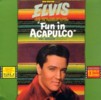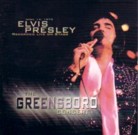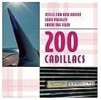Elvis is making a killing
Drugs, hamburgers and even death have not blunted the appeal of the original rock star, writes Harry Mount.
When Elvis died at the age of 42 on his ensuite loo at Graceland on August 16, 1977, he was in a terrible way. His favourite peanut butter and mashed banana sandwiches washed down with Pepsi had pumped him up to barrage-balloon proportions.
The drug habit was raging out of control. Elvis, who had first taken uppers and downers during army night exercises in Germany in the late 1950s, didn't consider himself a drug addict, because he went for prescription drugs over cocaine and heroin. Anyone else would certainly have called him an addict; his doctor had prescribed him 5684 narcotic and amphetamine pills in the previous seven months.
He was chronically out of touch with youth culture. A few years before he died, he wrote to Richard Nixon, calling him one of the top 10 outstanding men in the US. As someone who had "done an in-depth study of drug abuse and communist brain-washing", Elvis offered his services to the president as a federal agent to take on "the drug culture, the hippie elements, Black Panthers etc".
To add to it all, Larry Geller, Elvis's hairdresser, noticed that, as he styled Elvis's hair in his coffin, the King was going grey.
Elvis's recording career was dying, too. He hadn't had a No. 1 in Britain for seven years (The Wonder of You) and that was his only British No. 1 in the last 12 years of his life. Of his 20 British No. 1s, 15 were released by the time he was 30.
Why this unmatched success from beyond the grave, then, with One Night hitting No. 1 in Britain in January, securing Elvis the 1000th No. 1 single in the week after he would have turned 70?
The first and obvious answer is his voice. As Sam Phillips, the Sun Records producer who discovered him, said: "If I could find a white man who had the Negro sound and the Negro feel, I could make a billion dollars." Elvis - who had grown up to black music on the radio, and gospel music in the First Assembly of God Church in Tupelo, Tennessee - was that man. He could "sanitise" black music for white teenagers and add in a little white crooning on top; his favourite singer in the early '50s was Dean Martin.
The voice was at its best, with its fullest range, from 1956 to the late '60s, before age, peanut butter and Dexedrine squeezed that range from both ends of the scale. It's no surprise that all the recent posthumous Elvis No. 1s are cherry-picked from this period. Throw in Elvis's manners, charm, beautiful looks - part Cherokee, part Scottish (from his ancestor, Andrew Presley, who came from Scotland to North Carolina in 1745). Throw in a one-off name, Celtic in origin; there is a ruined medieval chapel dedicated to St Elvis in Pembrokeshire in Wales.
Still, for 25 years after Elvis's death, that cocktail of attractions didn't knock releases such as, say, Bucks Fizz's Making Your Mind Up or Joe Dolce's Shaddap You Face off the No. 1 spot.
What's changed is that it now takes only 20,000-odd records to get to No. 1 in Britain; 100,000 were needed even a decade ago, in the days when the charts were the source, as well as the reflection, of the nation's musical tastes, when Top of the Pops was still on BBC1, when, before you could download anything you wanted, your choice of music was dictated by what was in the shops and on a tiny number of radio stations.
What's also changed is that new artists aren't around long enough to build up the obsessive attachment that fans have for Elvis. In January, it was announced that the biggest British boy band of recent years, Busted, had broken up after just two years. In those two years, Busted did well, with four No. 1s and 2.5 million records. But that's not nearly enough of a track record to build up the "stickability" of Elvis fans. Charlie Simpson of Busted may have all sorts of success with his new group, Fightstar, but it's unlikely that current Busted fans will be buying his singles in 51 years' time, when Simpson will be 70.
As sales for new artists slump, those for Elvis have held up, because of his quality, but also because, as Elvis fans age, they can turn to middle-aged Elvis.
Yes, they'll go on buying early Elvis, as loyalists and collectors. But what most obsessive fans listen to is the later stuff: Elvis impersonators at parties imitate the 1970s shows in vast white suits. If you're a fat, middle-aged man, you're better off imitating another fat, middle-aged man than a wasp-waisted 21-year-old sex symbol from 1956. Late Elvis - deep, slow ballads with that minimal range - is also easier to sing along to; the perfect bathroom baritone.
Elvis's fall from grace only deepens the attraction. It hits that grotesque chord in human emotions that recoils in pleasurable horror at tales of excess, even in those we adore. Part of the thrill is born out of consolation; how nice to know that even the most attractive and talented man on earth can, just like us, go grey, jump up several belt notches and overindulge.
Even that overindulgence is on a heroic scale. While we slowly kill ourselves with little sins, such as dessert and cheese, or the second bottle of wine, Elvis took the high-speed route; his last prescription, written the day before he died, was for a spectacular mixture of Dilaudid, Quaalude, Dexedrine, Percodan, Amytal and Biphetamine.
Horrific, pointless and sad as his death was, he wouldn't be No. 1 now if he were slim, detoxed and appearing nightly in a cabaret show in Las Vegas.
News article, Source: The Telegraph, London, 4 June 2005





